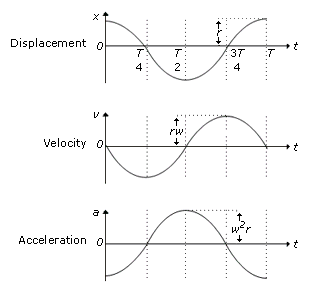SHM: an oscillation in which the acceleration is directly proportional to its displacement from its equilibrium position, and is directed towards the equilibrium.
Displacement: x, varies as a cosine or a sine wave with a maximum value of A the amplitude.
Velocity: v, is the gradient of teh displacement-time graph. has a maximum value of (2pief)A, f is frequency of the oscillation.
Acceleration: a, is the gradient of the velocity-time graph. it has a maximum value of (2pief)2A.

Phase difference: a measure of how much one wave lags behind another wave. it can be measured in degrees, radions or fractions of a cycle.
F=1/T
T=1/F
Frequency: number of complete revolutions or cycles that rotating or oscillating object makes per second.
Period: the time taken for a rotating or oscillating object to complete one revolution or cycle.
Comments
No comments have yet been made